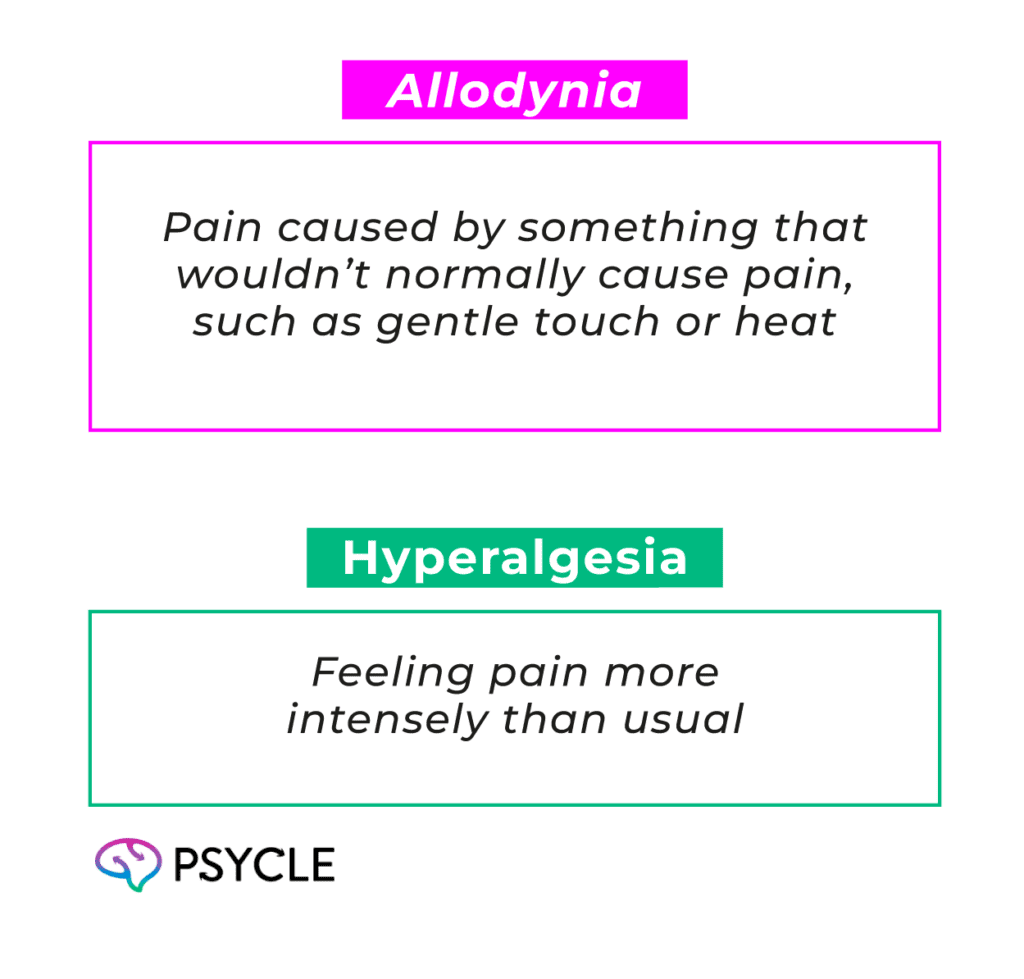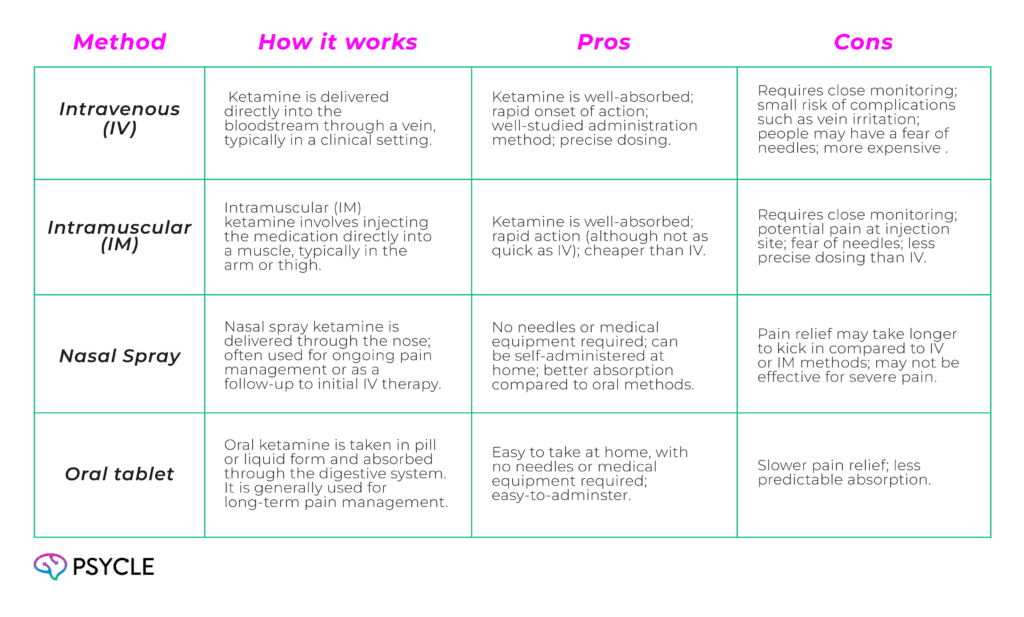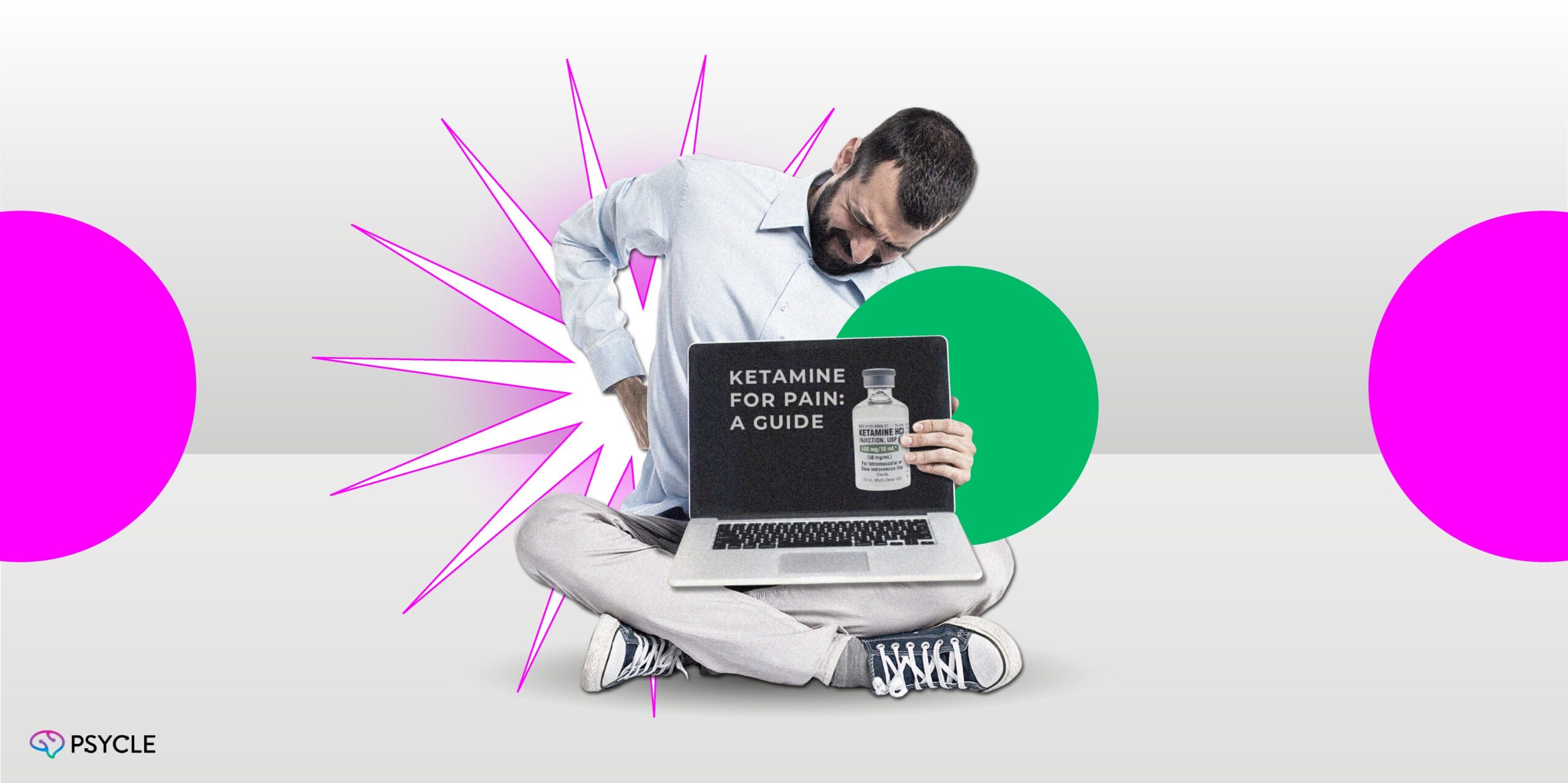Ketamine has evolved from being used primarily in surgeries to an emerging option in modern pain management, especially for those with treatment-resistant pain. In this article, we’ll be discussing the science of ketamine and pain, the types of treatment available, the benefits and risks of ketamine, and more.
Key Takeaways
- Ketamine is a promising treatment for both chronic pain conditions and mental health issues like depression.
- It provides fast-acting pain relief, making it especially useful for sudden pain flare-ups or acute pain.
- Ketamine is beneficial for individuals with chronic pain who haven’t found relief with other treatments.
- Ketamine is less addictive than opioids, though it should still be used under careful supervision.
- Ketamine should be administered in a controlled clinical setting to ensure safety and proper dosing.
What Is Ketamine?
Ketamine is classified as a dissociative anesthetic, meaning it can reduce pain perception while creating a sense of detachment from the body. It was first developed in the 1960s as a safer alternative to the anesthetic phencyclidine (PCP) and was initially used mainly in surgeries and veterinary medicine. Research later expanded to investigate its use for chronic pain conditions, as well as the treatment of mental health disorders.
Today, ketamine is widely used in clinical settings to help alleviate and manage pain, particularly in cases where other pain medications have been ineffective. Ketamine hasn’t been approved to treat pain, but as an approved anesthetic, clinics can legally provide ketamine as an “off-license” treatment.
How Does Ketamine Alleviate Pain?
Blocking NMDA Receptors
Ketamine primarily reduces pain by blocking NMDA (N-methyl-D-aspartate) receptors, which are proteins involved in pain transmission. By blocking these receptors, ketamine can decrease pain signals and the felt sensation of pain.
Central Sensitization
NMDA receptors also play a key role in central sensitization, where the nervous system becomes hypersensitive and amplifies sensory signals. Central sensitization is characterized by:

Central sensitization is a key mechanism underlying chronic pain, where pain has been going on for over three months and doesn’t have an obvious cause. Ketamine could prevent central sensitization from happening and prevent chronic pain from worsening.
Functional Connecitivty
Ketamine has been shown to affect functional connectivity, which refers to how different areas of the brain communicate with each other. This could help “re-wire” nerve patterns and potentially alter the nerve circuits involved in central sensitization and chronic pain.
Inflammatory Regulation
In addition to the nervous system, ketamine affects inflammation, which is the body’s natural defense system. Inflammation is a major cause of pain, particularly when overactivation occurs. Research studies show that ketamine can suppress overinflammation and so may be able to help reduce pain inflammatory-associated pain.
Conditions Treated with Ketamine
Ketamine is used to treat acute pain in clinical settings, which is when the pain is temporary, such as following surgery or a bone fracture. It is also used to treat various chronic pain conditions, offering long-lasting pain relief and, in some cases, even stopping the pain altogether.
Some chronic pain conditions treated with ketamine include:
- Neuropathic Pain: This is pain caused by nerve damage or dysfunction, often characterized by burning, tingling, or shooting sensations. Examples include diabetic neuropathy and shingles pain (postherpetic neuralgia).
- Fibromyalgia: A condition marked by widespread muscle pain, fatigue, and heightened sensitivity. This occurs because of dysfunction in the central nervous system (brain and spinal cord).
- Complex Regional Pain Syndrome (CRPS): A severe, persistent pain condition typically triggered by an injury characterized by burning pain, swelling, and changes in skin color or temperature in the affected area.
- Chronic Migraines: Intense, recurring headaches that can cause throbbing pain, sensitivity to light and sound, and nausea.
- Phantom Limb Pain: Pain that feels like it’s coming from a body part that’s no longer there, often experienced after an amputation.
Ketamine Administration Methods
Ketamine can be administered in various ways, with different types of treatment suited to different pain conditions and circumstances.

Why Supervision Matters
Clinical supervision is essential when people receive IV and IM ketamine treatments for pain. Healthcare providers ensure the correct dosage is given, monitor a patient’s response to the medication, and address any potential side effects, such as changes in blood pressure or confusion.
While nasal sprays and oral tablets can be used at home, it’s still important that patients using these medications have regular check-ins with their healthcare provider. Doctors should discuss how a patient is responding to ketamine, regarding their pain, mood, and potential side effects, so that treatment plans can be adjusted accordingly to ensure the best possible results.
What to Expect During Ketamine Therapy
When people receive ketamine therapy for pain, the treatment typically involves three stages: preparation, administration, and recovery.
Preparation
Before treatment, a healthcare provider reviews the patient’s medical history and current medications. If receiving IV or IM ketamine, the patient may be asked to fast for a few hours.
Administration
- IV/IM: For IV or IM treatments, ketamine is administered slowly over 40 minutes to an hour.
- Nasal Spray/Oral: These methods are quicker and usually self-administered, with guidance from a healthcare provider.
Immediate Effects
- Pain-relief: A decrease in pain levels or complete relief of pain
- Dissociation: Many patients experience a sense of dissociation, feeling disconnected from their body or surroundings.
- Mild Euphoria: Some patients report mild euphoria or relaxation
- Cardiovascular changes: Mild increase in heart rate or blood pressure
Duration and Frequency
A typical ketamine session lasts between 40 minutes and an hour for IV/IM treatments, with the main drug effects wearing off within a few hours. Nasal or oral formulations have a slower onset, and effects may last several hours. Initially, sessions are often weekly or bi-weekly, with frequency decreasing as symptoms improve. Regular follow-up visits allow for adjustments in treatment as needed.
Ketamine’s Benefits in Pain Management
Rapid Onset of Action
Ketamine provides fast-acting pain relief, often beginning within minutes. This makes it especially effective for acute or breakthrough pain, which is when people with chronic pain have a sudden increase in pain.
Can Be Longer Lasting Than Other Pain Medications
The duration of ketamine’s pain relief varies depending on the individual and the underlying causes of their pain. For some, relief lasts only as long as the immediate effects of the drug (about two hours), but it may also last for several days. Studies have shown that a series of ketamine treatments can provide pain relief for up to three months.
Beneficial When Other Treatments Haven’t Worked
Ketamine is a promising option for individuals with chronic pain who have not found relief from other treatments, including opioids or nerve pain medications. A study of over 70 patients with treatment-resistant chronic pain showed regular use of oral ketamine decreased pain levels and improved their quality of life.
Less Addictive Than Opioids
Opioid analgesics primarily work by activating mu-opioid receptors, which trigger the release of dopamine, a chemical linked to pleasure and addiction. In contrast, ketamine mainly affects NMDA receptors, leading to different effects in the brain. Because of this, ketamine is generally considered to have a lower risk of abuse compared to opioids and may even aid in overcoming opioid addiction.
However, ketamine is still a drug of abuse and does interact with mu-opioid receptors, but just in smaller amounts. Using ketamine in a controlled clinical setting helps reduce the risk of addiction.
Improved Mood
In addition to pain relief, ketamine has been shown to improve mood and reduce symptoms of depression, which commonly occur in chronic pain conditions. Ketamine treatment could help address the physical and emotional aspects of pain and, therefore, improve patients’ overall quality of life.
Potential Side Effects and Risks
Ketamine therapy is generally well-tolerated, but there are some common side effects. These can include nausea, dissociation, dizziness, fatigue, and increased blood pressure. While these effects are usually temporary, they can be unsettling for some patients.
Ketamine generally has no long-term risks when used in controlled clinical settings. However, ketamine abuse is associated with severe health risks, particularly to the bladder.
Who Should Consider Ketamine Therapy?
Ketamine therapy is especially beneficial for patients with treatment-resistant chronic pain. However, it may not be suitable for those with severe heart conditions, psychosis, or a history of substance abuse. Patients should discuss their medical history with a healthcare provider to determine if ketamine is an appropriate option for their pain management.
Factors that influence the likelihood of success include the type of pain, overall physical health, mental well-being, and at-home support.
Sources
- https://pubmed.ncbi.nlm.nih.gov/23432384/
- https://pubmed.ncbi.nlm.nih.gov/30969646/

